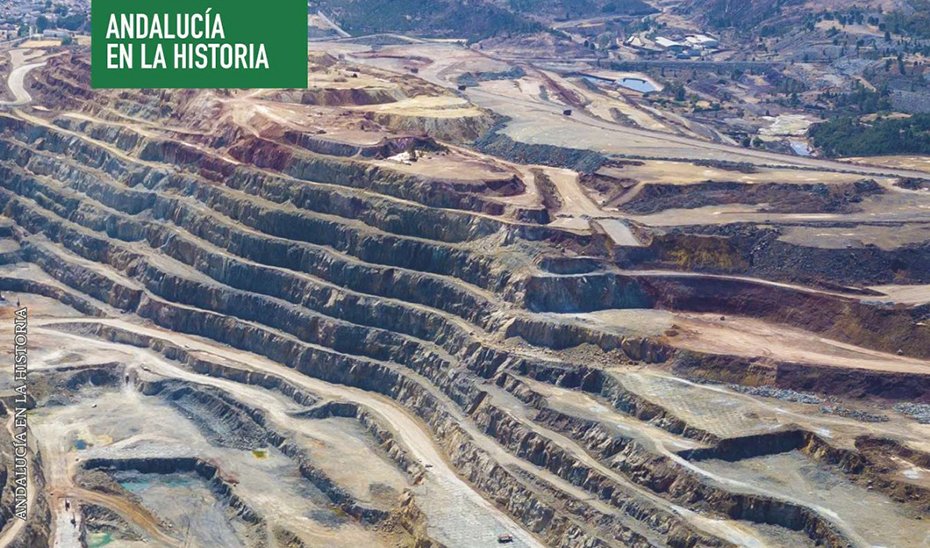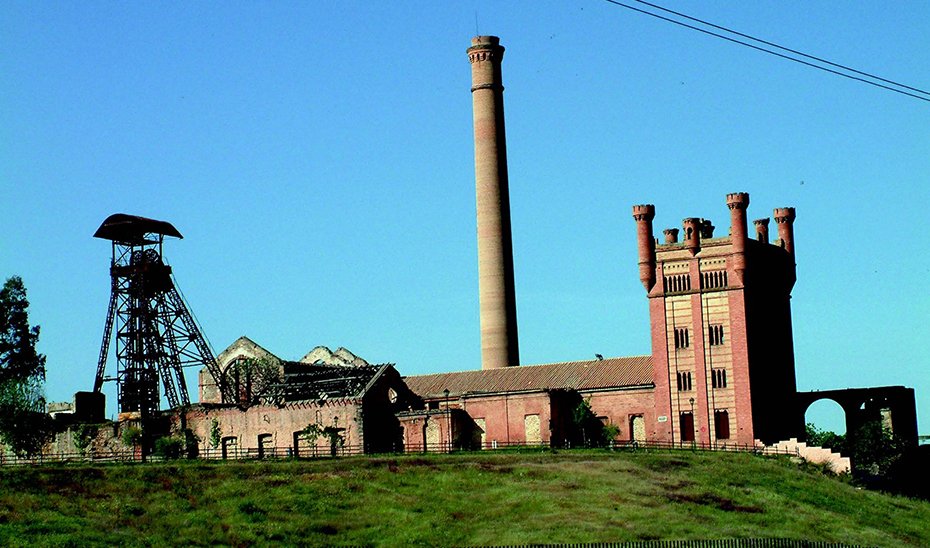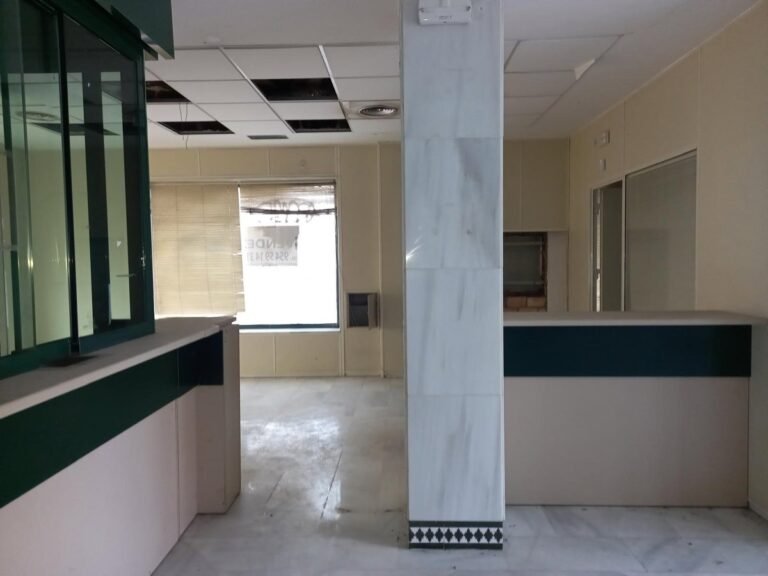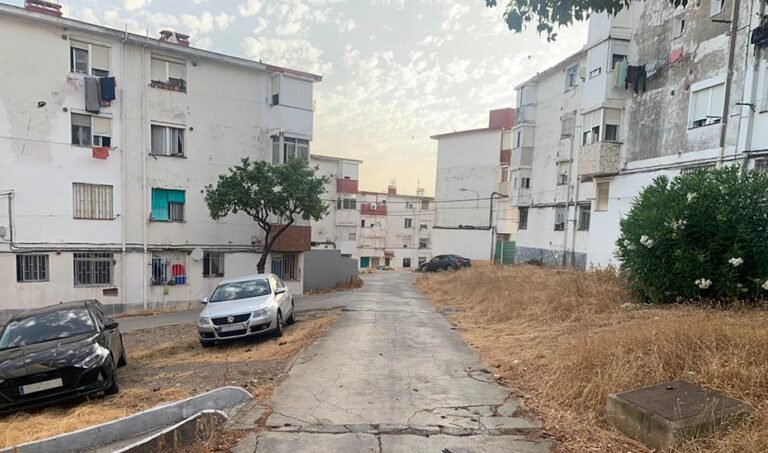
Andalucía is known since ancient times as an area that houses exceptional mineral resources, exploited from prehistory to the present day. For example, it was the top global producer of silver in Roman times, and of copper and lead in contemporary times. Nowadays, mining and metallurgy are resurging with strength and great expectations for investment, research, and innovation in resources and exploitation techniques.
Led by renowned specialists – archaeologists, historians, geologists, and mining engineers – coordinated by the full professor of Prehistory and Archaeology at the University of Seville, Mark A. Hunt Ortiz, issue 88 of the magazine ‘Andalucía en la Historia’ delves into the millennia-long trajectory of these activities in the community through ten articles.
The dossier starts with the article by geologist Antonio Carmona Ruiz and mining engineer Inmaculada Ramos Márquez titled ‘Mineral Resources of Andalucía’, which surveys these relevant resources classified by substances. According to the data from the latest Mining Statistics of Spain in 2023, Andalucía leads in the value of mineral production with 34% of the national total, mainly due to copper, zinc, lead, silver, fluorite, strontium, sea salt, marble, and gypsum.
‘Urium,’ the Roman name for the Río Tinto, refers to the mining settlement in the current town of Minas de Río Tinto in Huelva.
The methodology of archaeological study of mining and metallurgical remains is explained in the text ‘Ancient Mining and Metallurgy Research Techniques’ by archaeologist Ignacio Montero Ruiz. The information provided by these minerals and metals helps answer questions about the past and understand how metallurgical technology impacted people’s lives. Next, the major phases of mining and metallurgy in Andalucía are addressed, starting with the article ‘Prehistoric Mining and Metallurgy’ by archaeologist Mark A. Hunt Ortiz, which covers non-metallic precursors – rocks and pigments – and the oldest metals produced by humans.
The next stage is covered by archaeologists Mercedes Murillo Barroso and Pablo González Zambrano in the article ‘Phoenician Metallurgy in Tartessos’, a period of significant changes and innovations brought from the Eastern Mediterranean, which radically altered the economic, social, political, and technological landscape compared to the previous era. Metallurgy was one of the technologies that enabled the exploitation of new metals, intensified production, and expanded trade. Following that, the Roman phase is addressed by archaeologist Luis Arboledas Martínez with the intriguing title ‘Andalucía: the wealth of the genuine ‘El Dorado’ of Antiquity’. Andalusian mines were intensively exploited from the 2nd century BC to the 2nd century AD, reaching production levels only surpassed from the 19th century onwards.
The period following the Roman era is explored by archaeologist José María Martín Civantos in the article ‘Medieval Mining’, a major period unknown within this activity. On the other hand, historian Manuel Castillo Martos explains the innovations that occurred during the Modern Age with the text ‘Achievement of Silver Mineral Amalgamation’. The article highlights two protagonists: Bartolomé de Medina, who invented the process of large-scale amalgamation to extract silver from minerals, and mercury, an essential metal for amalgamation.

Image attributed to the Tren del Horcajo, which traveled from Peñarroya to Puertollano and Fuente del Arco, with a branch to the mines of San Quintín.
The archaeologist Aquilino Delgado Domínguez takes on the next period in ‘Mining and Metallurgy in Andalucía during the 18th to 20th centuries’, followed by the article by geologist and mining engineer Emilio Romero Macías, ‘The Links of the Railway and Mining Industry’, explaining the crucial role of this mode of transport in the sector’s development.
Finally, mining engineer Iván Carrasco, in the article ‘The Current Mining Landscape in Andalucía’, presents the expansion of a thriving sector with a solid future in the European context, focusing on sustainability and energy transition.
Articles
Regarding the articles, issue 88 of the magazine includes ‘Las Horcadas: a forgotten loading point on the Guadalquivir River’ by Luis Parejo Fernández, about an unknown emergence between Trebujena and Lebrija that played a crucial role in river navigation. Manuel Herrera Carranza and Esteban Moreno Toral contribute ‘Avenzoar, a universal doctor in al Andalus’, highlighting the profile of this 11th-century Sevillian scientist comparable to figures like Avicenna.
Additionally, Santiago Navarro de la Fuente delves into the experiences of ‘Andalusian Jesuits in the Pacific during World War II’, while ‘A Medieval Database in the Cathedral of Seville’ by Diego Belmonte-Fernández details the characteristics of the White Book and the Endowments Book. This section concludes with Juan Carlos de Lara’s piece on ‘Unknown Drawing, Poem, and Oil Painting by Gustavo Adolfo Bécquer’.
A standout feature of the new issue is an article ‘In Memoriam’ dedicated to Enrique Valdivieso, the art historian who passed away in February. Recognized for his studies on Spanish Baroque painting, he dedicated his career to rediscovering and valorizing Golden Age artists like Murillo and Zurbarán, as well as mentoring several generations of specialists. With a text by Magdalena Illán, the magazine ‘Andalucía en la Historia’ pays a well-deserved tribute to this great master of art history.

Facilities for coal extraction in Villanueva del Río y Minas (Huelva).
In addition, the ‘Andalucía in its Documents’ section includes a piece by Antonio Jurado and Sergio Páez, highlighting the significance of document custody as a power instrument in the archives of noble families, and a new installment of ‘Young Values’ with an article by Juan Antonio Báez focusing on the use of textiles in the Cordoban Caliphate as an expression of power.
Magazine ‘Andalucía en la Historia’
The magazine ‘Andalucía en la Historia’ is a quarterly publication of historical dissemination published by the Andalusian Studies Center Foundation (CENTRA) and directed by the full professor of Contemporary History at the University of Seville, José Antonio Parejo.




